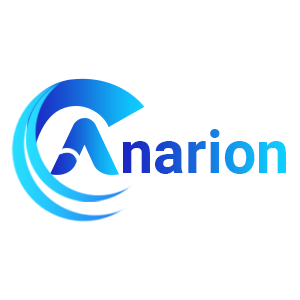Zeppelin VM by Anarion Technologies
Zeppelin is a powerful and flexible open-source web-based notebook designed for interactive data analytics and visualization. Built to support data scientists, analysts, and developers, Zeppelin enables collaborative exploration of data using multiple languages and backends, including Apache Spark, Python, SQL, and more.
Its intuitive interface allows users to create dynamic notebooks with visualizations, code, and rich text in a single document. Zeppelin supports real-time collaboration and integration with various data sources, making it ideal for both individual analysis and team-based data projects.
Key features include multi-language support, interactive data visualizations, pluggable interpreters, and customizable dashboards. Zeppelin is well-suited for a wide range of data workflows, from ad hoc queries and ETL processes to advanced machine learning and business intelligence reporting.
Designed for scalability and extensibility, Apache Zeppelin works seamlessly in big data environments and integrates with tools like Hadoop, Hive, and Flink. Its open-source nature ensures continuous improvements and contributions from a global developer community.
To subscribe to this product from Azure Marketplace and initiate an instance using the Azure compute service, follow these steps:
1. Navigate to Azure Marketplace and subscribe to the desired product.
2. Search for “virtual machines” and select “Virtual machines” under Services.
3. Click on “Add” in the Virtual machines page, which will lead you to the Create a virtual machine page.
4. In the Basics tab:
- Ensure the correct subscription is chosen under Project details.
- Opt for creating a new resource group by selecting “Create new resource group” and name it as “myResourceGroup.”
5. Under Instance details:
- Enter “myVM” as the Virtual machine name.
- Choose “East US” as the Region.
- Select “Ubuntu 18.04 LTS” as the Image.
- Leave other settings as default.
6. For Administrator account:
- Pick “SSH public key.”
- Provide your user name and paste your public key, ensuring no leading or trailing white spaces.
7. Under Inbound port rules > Public inbound ports:
- Choose “Allow selected ports.”
- Select “SSH (22)” and “HTTP (80)” from the drop-down.
8. Keep the remaining settings at their defaults and click on “Review + create” at the bottom of the page.
9. The “Create a virtual machine” page will display the details of the VM you’re about to create. Once ready, click on “Create.”
10. The deployment process will take a few minutes. Once it’s finished, proceed to the next section.
To connect to the virtual machine:
1. Access the overview page of your VM and click on “Connect.”
2. On the “Connect to virtual machine” page:
- Keep the default options for connecting via IP address over port 22.
- A connection command for logging in will be displayed. Click the button to copy the command. Here’s an example of what the SSH connection command looks like:
“`
ssh azureuser@10.111.12.123
“`
3. Using the same bash shell that you used to generate your SSH key pair, you can either reopen the Cloud Shell by selecting >_ again
or going to https://shell.azure.com/bash.
4. Paste the SSH connection command into the shell to initiate an SSH session.
Usage/Deployment Instructions
Anarion Technologies – Zeppelin
Note: Search product on Azure marketplace and click on “Get it now”
Click on Continue
Click on Create
Creating a virtual machine, enter or select appropriate values for zone, machine type, resource group and so on as per your choice.
After Process of Create Virtual Machine. You have got an Option Go to Resource Group
Click Go to Resource Group
Click on the Network Security Group: zeppelin-nsg
Click on Inbound Security Rule
Click on Add
Add Port
Add Port
Destination Port Ranges Section* (where default value is 8080)
8080
Select Protocol as TCP
Option Action is to be Allow
Click on Add
Click on Refresh
Copy the Public IP Address
Click on Refresh
Click Go to Resource Group
Copy the Public IP Address
Step:1
SSH into Terminal and Run these Commands:
$ sudo su
$ cd ../..
$ apt update
$ docker –version
$ docker pull apache/zeppelin:0.12.0
$ docker run -d -p 8080:8080 –name zeppelin apache/zeppelin:0.12.0
$ docker ps
$ docker stop zeppelin
$ docker start zeppelin
Step:2
Click on Refresh
Click Go to Resource Group
Copy the Public IP Address
This will start the Laravel development server on http://0.0.0.0:8080 making it accessible from any IP address.
Access the Application:
Open your browser and access the application using the IP address of your server
Welcome to the Zeppelin page.
Version:
Services:
We can change it into classic mode.
Thanks!!!
All your queries are important to us. Please feel free to connect.
24X7 support provided for all the customers.
We are happy to help you.
Contact Number: +1 (415) 800-4585
Support E-mail: support@anariontech.com


